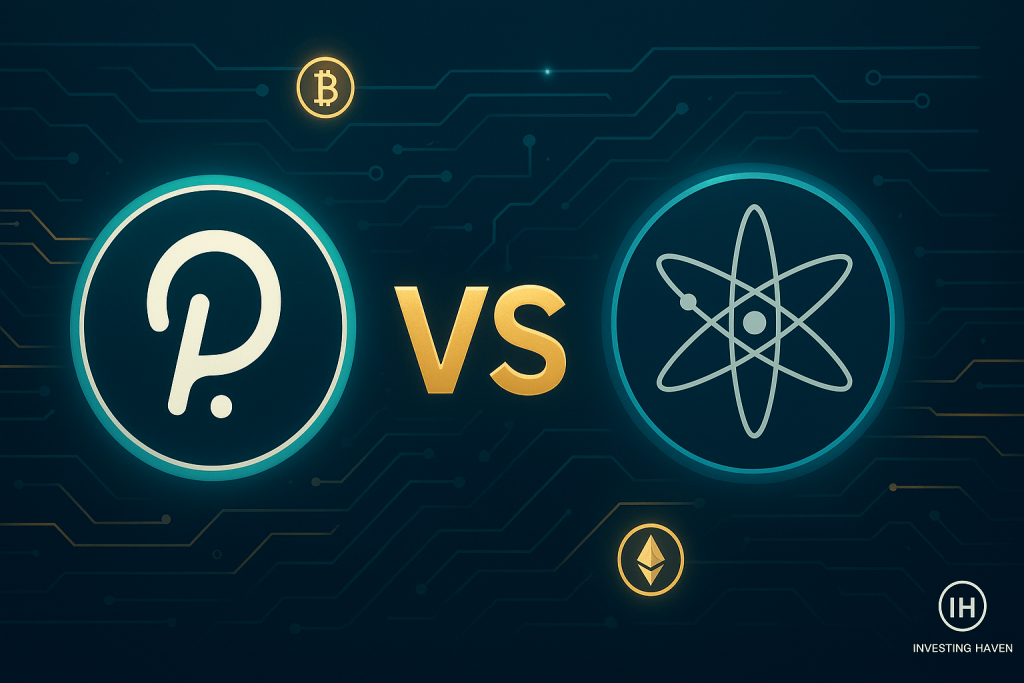Polkadot focuses on a tightly integrated ecosystem built on shared security. Cosmos offers flexibility through independent chains linked by IBC.
Polkadot and Cosmos aim to solve the same challenge, connecting different blockchains so apps can cooperate across networks.
The Polkadot vs Cosmos comparison comes down to how they approach security, ecosystem strength, and real-world developer use.
Let’s assess which structure offers the better foundation for cross-chain apps.
RELATED: Avalanche (AVAX) vs. Polkadot (DOT)
Polkadot vs Cosmos: Security And Architecture
Polkadot relies on one central chain (relay chain) that secures all parachains. This structure supports apps that need strong coordination. Around 216 parachain projects are registered across Polkadot and Kusama, which shows steady developer commitment to the model.
This structure generally works well for builders who want stronger trust guarantees early on.
Cosmos takes the opposite path. Each chain runs its own security and connects using IBC. This attracts teams that want more control and faster product rollout.
Having more than 115 chains actively linked through IBC proves that flexibility matters to many developers, even if it introduces higher security variance between chains.
RECOMMENDED: 5 Compelling Reasons to Buy Polkadot (DOT) in 2025
TVL, Active Users, And Developer Momentum
Polkadot reports roughly $3.8 billion in combined DeFi TVL across parachains. This concentration of liquidity allows developers to build multi-feature apps more easily. Usually, high liquidity density tends to attract projects looking for long-term stability.
Cosmos shows strong participation but with more fragmentation. Osmosis, its main DeFi hub, currently holds about $37.1 million in TVL. While lower by comparison, it highlights a structure that spreads value across many chains rather than centralizing it.
Cross-Chain Tooling And UX
Polkadot uses Cross-chain messaging (XCM), which allows apps to interact across parachains without external bridges. This setup feels smoother for developers building complex workflows across chains.
Cosmos uses Inter-Blockchain Communication Protocol (IBC) messaging, supported by external relayers. It provides wide routing options but can require more manual setup.
Overall, Polkadot leans toward deeper integration while Cosmos supports broader innovation.
Conclusion
Polkadot generally suits projects that need security and close coordination. Cosmos works better for teams testing new ideas across multiple chains.
For now, monitor liquidity distribution and developer activity, which should show where real adoption grows fastest between Polkadot vs Cosmos.
Join eToro today and receive $10 in free crypto on your first deposit. Trade crypto, stocks, and ETFs with powerful tools and social investing features like CopyTrader™
Crypto investments are risky and may not suit retail investors; you could lose your entire investment. Understand the risks here
Wondering which crypto to focus on right now?
Our premium members already know.
Since 2017, InvestingHaven’s blockchain research service has been guiding investors through both bull runs and crypto winters.
What makes it different?
-
Proprietary 15-indicator methodology developed over 15+ years of market research.
-
Proven track record of spotting major turning points before markets move.
-
Focused alerts on only the key crypto assets that matter — no noise, no distractions.
Thousands of readers rely on InvestingHaven to stay ahead of the crowd. Now it’s your turn.
Act today and join the original crypto research service — still live and stronger than ever since 2017.




